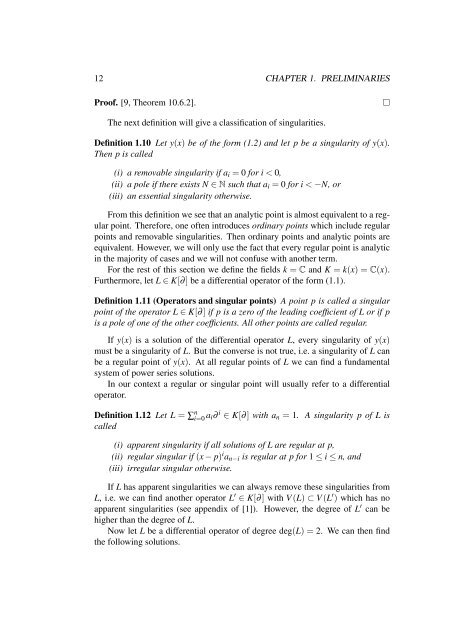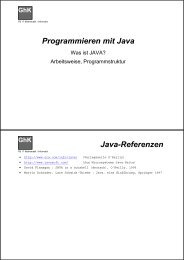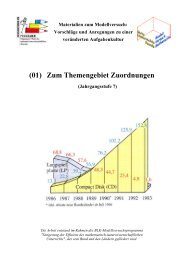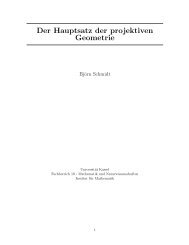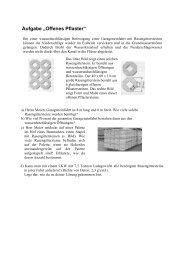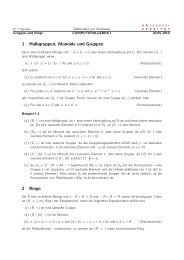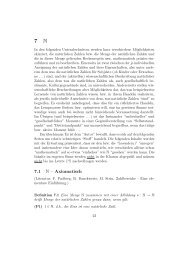Solving Differential Equations in Terms of Bessel Functions
Solving Differential Equations in Terms of Bessel Functions
Solving Differential Equations in Terms of Bessel Functions
You also want an ePaper? Increase the reach of your titles
YUMPU automatically turns print PDFs into web optimized ePapers that Google loves.
12 CHAPTER 1. PRELIMINARIES<br />
Pro<strong>of</strong>. [9, Theorem 10.6.2]. <br />
The next def<strong>in</strong>ition will give a classification <strong>of</strong> s<strong>in</strong>gularities.<br />
Def<strong>in</strong>ition 1.10 Let y(x) be <strong>of</strong> the form (1.2) and let p be a s<strong>in</strong>gularity <strong>of</strong> y(x).<br />
Then p is called<br />
(i) a removable s<strong>in</strong>gularity if ai = 0 for i < 0,<br />
(ii) a pole if there exists N ∈ N such that ai = 0 for i < −N, or<br />
(iii) an essential s<strong>in</strong>gularity otherwise.<br />
From this def<strong>in</strong>ition we see that an analytic po<strong>in</strong>t is almost equivalent to a regular<br />
po<strong>in</strong>t. Therefore, one <strong>of</strong>ten <strong>in</strong>troduces ord<strong>in</strong>ary po<strong>in</strong>ts which <strong>in</strong>clude regular<br />
po<strong>in</strong>ts and removable s<strong>in</strong>gularities. Then ord<strong>in</strong>ary po<strong>in</strong>ts and analytic po<strong>in</strong>ts are<br />
equivalent. However, we will only use the fact that every regular po<strong>in</strong>t is analytic<br />
<strong>in</strong> the majority <strong>of</strong> cases and we will not confuse with another term.<br />
For the rest <strong>of</strong> this section we def<strong>in</strong>e the fields k = C and K = k(x) = C(x).<br />
Furthermore, let L ∈ K[∂] be a differential operator <strong>of</strong> the form (1.1).<br />
Def<strong>in</strong>ition 1.11 (Operators and s<strong>in</strong>gular po<strong>in</strong>ts) A po<strong>in</strong>t p is called a s<strong>in</strong>gular<br />
po<strong>in</strong>t <strong>of</strong> the operator L ∈ K[∂] if p is a zero <strong>of</strong> the lead<strong>in</strong>g coefficient <strong>of</strong> L or if p<br />
is a pole <strong>of</strong> one <strong>of</strong> the other coefficients. All other po<strong>in</strong>ts are called regular.<br />
If y(x) is a solution <strong>of</strong> the differential operator L, every s<strong>in</strong>gularity <strong>of</strong> y(x)<br />
must be a s<strong>in</strong>gularity <strong>of</strong> L. But the converse is not true, i.e. a s<strong>in</strong>gularity <strong>of</strong> L can<br />
be a regular po<strong>in</strong>t <strong>of</strong> y(x). At all regular po<strong>in</strong>ts <strong>of</strong> L we can f<strong>in</strong>d a fundamental<br />
system <strong>of</strong> power series solutions.<br />
In our context a regular or s<strong>in</strong>gular po<strong>in</strong>t will usually refer to a differential<br />
operator.<br />
Def<strong>in</strong>ition 1.12 Let L = ∑ n i=0 ai∂ i ∈ K[∂] with an = 1. A s<strong>in</strong>gularity p <strong>of</strong> L is<br />
called<br />
(i) apparent s<strong>in</strong>gularity if all solutions <strong>of</strong> L are regular at p,<br />
(ii) regular s<strong>in</strong>gular if (x − p) i an−i is regular at p for 1 ≤ i ≤ n, and<br />
(iii) irregular s<strong>in</strong>gular otherwise.<br />
If L has apparent s<strong>in</strong>gularities we can always remove these s<strong>in</strong>gularities from<br />
L, i.e. we can f<strong>in</strong>d another operator L ′ ∈ K[∂] with V (L) ⊂ V (L ′ ) which has no<br />
apparent s<strong>in</strong>gularities (see appendix <strong>of</strong> [1]). However, the degree <strong>of</strong> L ′ can be<br />
higher than the degree <strong>of</strong> L.<br />
Now let L be a differential operator <strong>of</strong> degree deg(L) = 2. We can then f<strong>in</strong>d<br />
the follow<strong>in</strong>g solutions.


